In addition to joy, the home greenhouse brings care, especially in the case of diseases or damage to plants by insects. One of the rather unpleasant problems is midges in indoor flowers, which are sometimes very difficult to get rid of. To solve the problem quickly, you need to understand the reason for the appearance of uninvited guests.
Content
Causes of midges on indoor plants
In most cases, the moths need a moist environment, therefore, where there is excess water, overflow, stagnation, they appear there, as these are the best conditions for the development of larvae. There are also secondary reasons:
- Infection from a nearby flower, possibly a new, recently purchased one. The competent behavior of the flower grower should consist in carefully inspecting the new tenant and, if necessary, keeping him in quarantine for some time.
- Transplanting into a too spacious pot, where condensation forms on the walls and moisture accumulates, even when watering is correct, no frills. But midges can be enough.
- Initially contaminated soil, where pest eggs were already located. Therefore, there is often a point in the recommendations - to calcine the soil mixture before use.
- Somewhere near the flowers there is a spoiled product (for example, a stub from an apple has fallen over), or a purchase brought from a greengrocery store where midges have settled. Soon they will scout the surroundings and find vulnerable plants.
If you look at the time of year, then more often pests appear in the winter. It is then that the atmosphere in the apartments is not very favorable due to heating, which knocks the balance of the desired humidity. Adverse conditions make the flower weak and it is easier for midges to settle on it.
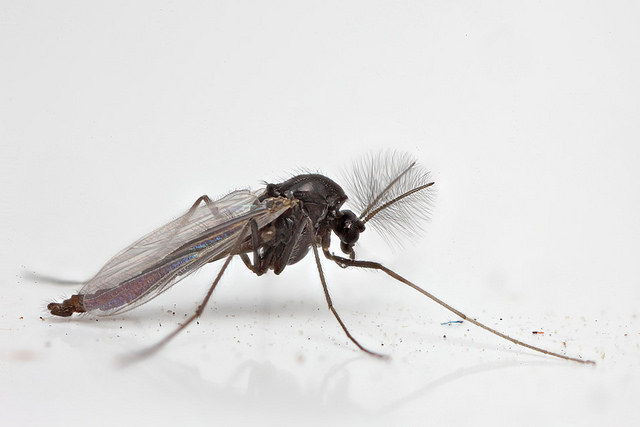 You may be interested in:
You may be interested in:Pest Varieties
Among the pests, which can be called generalized midges, there are such varieties:
- Drosophila - fruit, fruit or wine midge, looks like a miniature fly. It feeds on plant sap, microorganisms, rotting residues. He loves cyperus, callas, violets, orchids, but in their absence he will not disdain any other flower.
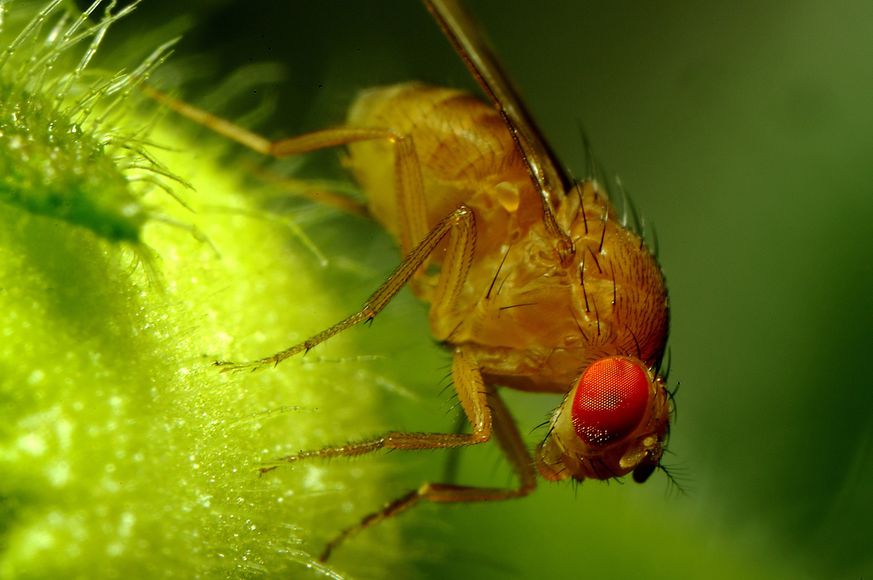
Drosophila - Scyarida is a mushroom mosquito, really looks like a black mosquito. Their victim is the root system of the plant. Inhabited there, they also very compact the earth, depriving the roots of oxygen. If they have a choice, they will settle in a pot with ficus, violet, azalea, aloe, Decembrist.
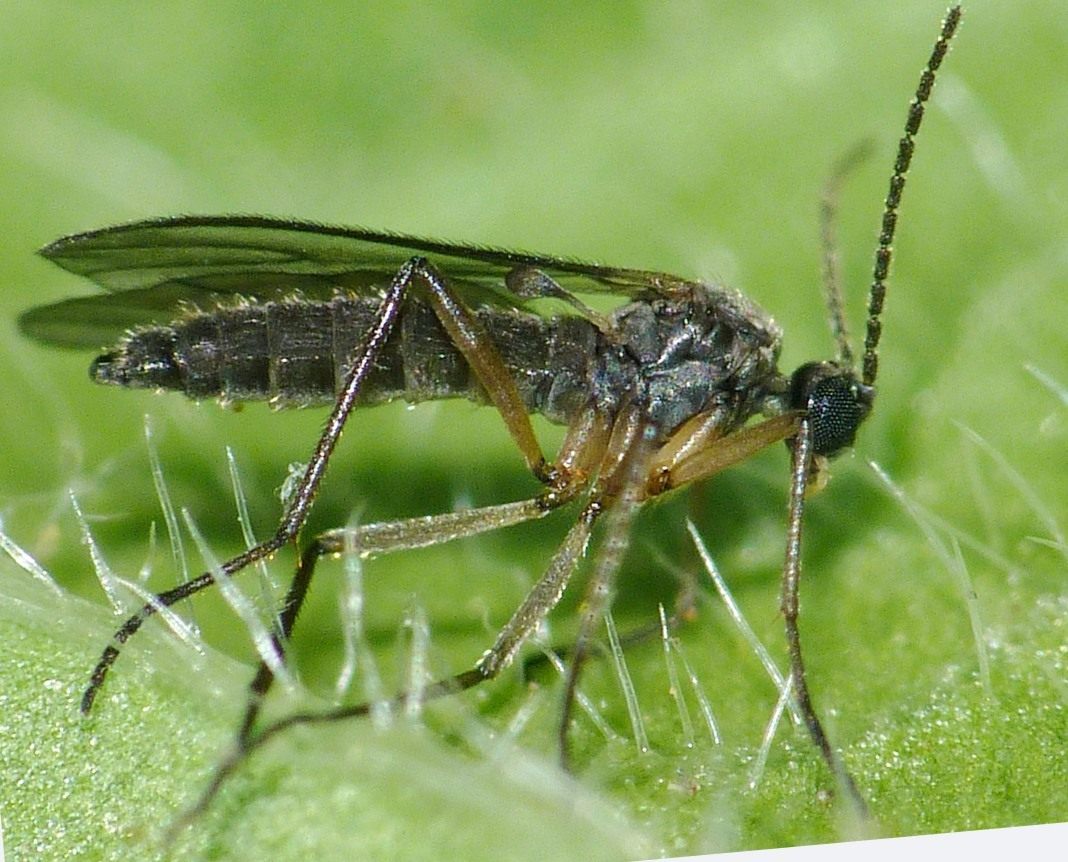
Sciarida - Whitefly looks like white but very small moth. It is dangerous at all its stages of development. It sucks the juice from the leaves, while secreting liquid, like aphids. This becomes a good food for fungi that continue to destroy the plant. Orchid, fuchsia, roses, balsam, passionflower, and pelargonium are far from a complete list of their favorite victims.
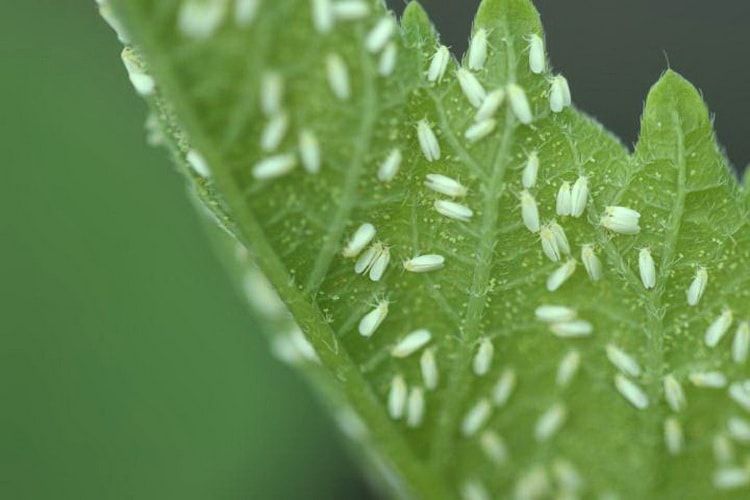
Whitefly - Podura, or foottail - they can be seen on the surface of wet soil, at the foot of a plant or in a sump where there is water. They are very small (1-2 mm), fast, jumping. They feed on microorganisms and decaying organics, that is, they act more like insects, indicators of an excess of watering.
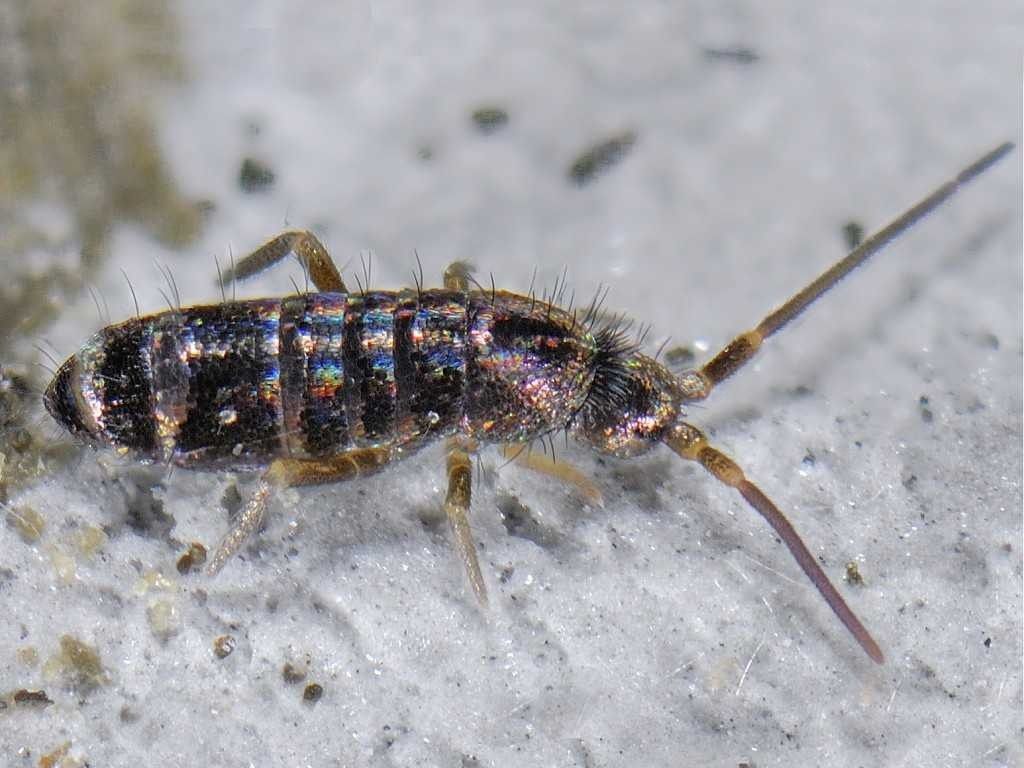
Foottail But when there are more of them, they switch to young white shoots of roots or underground shoots of plants, exposing them to fungal and bacterial lesions. They can settle in any plants, but violets, begonias, fuchsias and orchids are more preferred.
All preferences of midges are rather conditional, they will settle where there will be humidity and decaying organic matter.
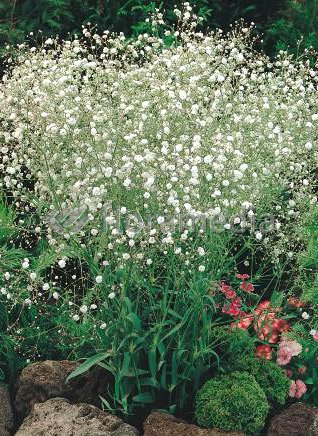 You may be interested in:
You may be interested in:How to deal with midges in indoor colors
Knowing the enemy "in person", now it remains to be studied how to deal with him. There are many ways, this is mechanical removal, and treatment with home remedies or purchased chemicals.
On the leaves
At the beginning of the procedure for the destruction of pests on the leaves, you need to remove adults as much as possible. To do this, you can first use a vacuum cleaner. Set traps further to continue the collection. Trap Options:
- a saucer with a sweet liquid or jam, placed next to the affected flower;
- duct tape hanging around;
- homemade sticky traps: paper, dyed yellow and smeared with honey. For greater efficiency, you can attach a toothpick to it and stick it into the ground, like a flag, to use both sides of the paper.
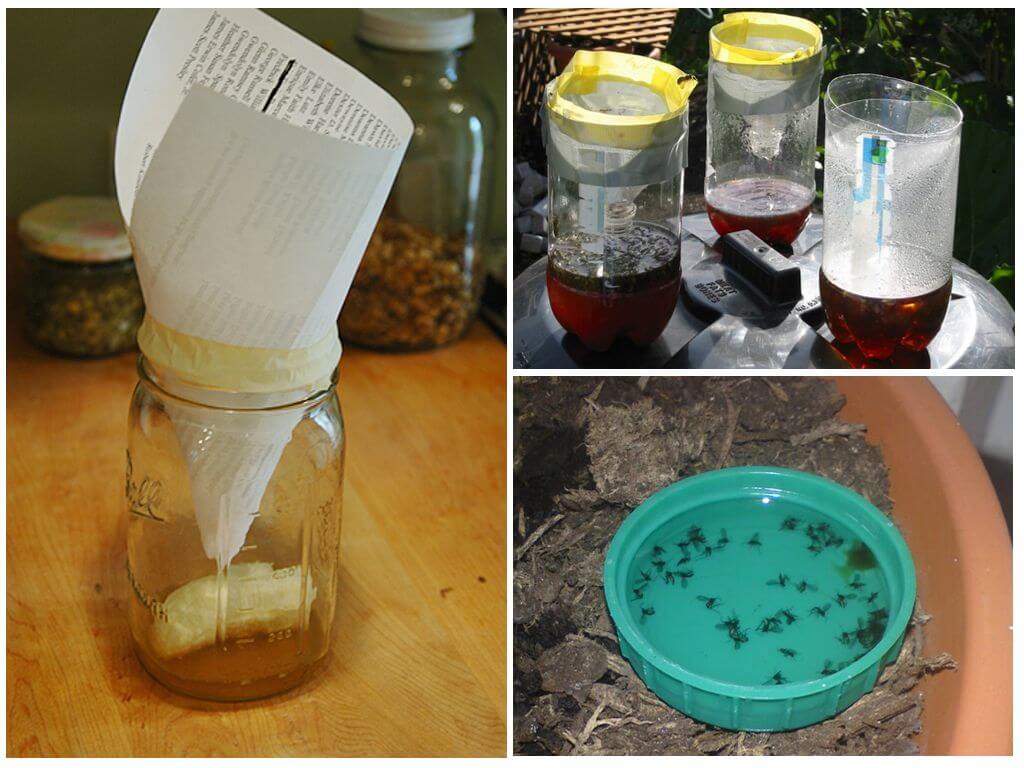
When the visible pests are collected, the flower needs to take a shower, washing the leaves as much as possible from the larvae and eggs glued to the bottom of the leaves.
The next step is poison treatment. To do this, in accordance with the size of the lesions and personal views on the safety of drugs for the house and its inhabitants, you need to choose a purchased insecticide or prepare it yourself.
Folk remedies:
- garlic infusion: pour 600 ml of boiling water into a container with a chopped head of garlic, insist 2-4 hours. Spray the plant with cooled liquid and spill the earth;
- Antiparasitic products for animals, for example, Drontal or Pirantel, grind and dissolve in water, spray and pour. Repeat after 7-10 days;
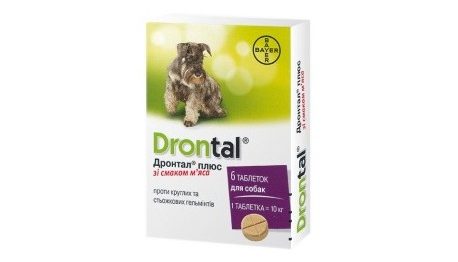
Drontal - infusion of partitions of walnut and cloves: pour 500 ml of boiling water over a teaspoon of both components, leave for 24 hours and process the entire flowerpot. Repeat twice;
- tobacco: steam 50 g of dried tobacco with a liter of boiling water and leave for 2 days. Spray in 2 doses after 5 days;
- celandine: 100 g of celandine herb (dry, can be bought at a pharmacy) is poured with boiled water in an amount of 1 liter and infused for a day. Leaf processing 3-fold, every 10 days;
- soap solution: 1 l of water, 20 g of laundry soap. Dissolve, process.
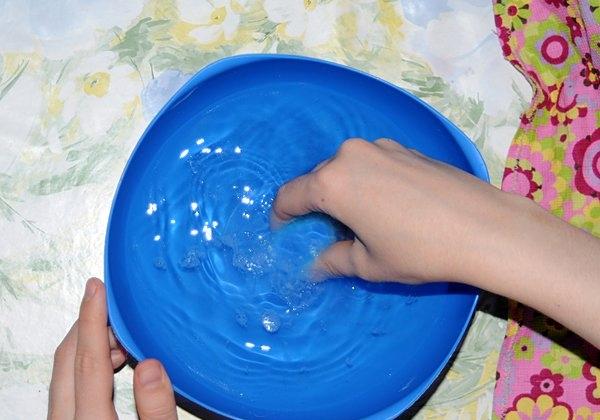
Soap solution for processing indoor plants from midges
From the finished products there are aerosol Dichlorvos, Raptor, Raid, or in the form of liquids Actellik, Fufanon, Mospilan, Confidor. You need to be extremely careful with them, the procedure should not be carried out in a residential building, and for reliability you can make a "toxic greenhouse". To do this, after processing, throw an intact bag on the plant and tie it around the pot so that the poisoned air is inside for a long time - 4-5 hours.
All these actions need to be repeated in a week or two in case not all eggs have died. In this case, the population will soon increase again, and all the work will be done in vain.
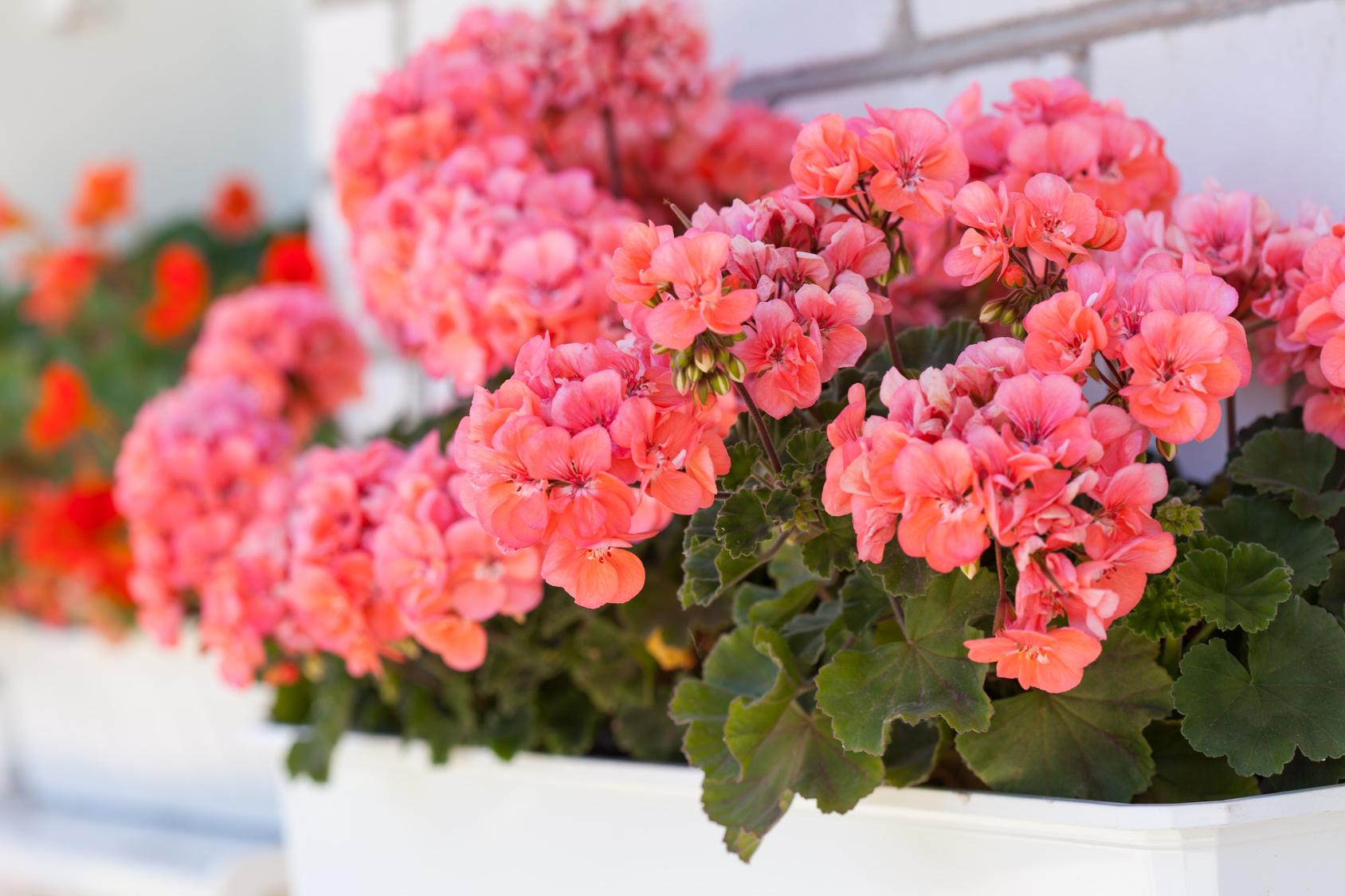 You may be interested in:
You may be interested in:In the ground
With pests living in the land of houseplants, the means of control are slightly different.At the first stage, you also need to try to collect more adult midges in order to minimize reproduction. Lay out sticky traps around the flowerpot, strips on the ground.
Then the soil is cultivated. First, the plant must be stopped watering so that the substrate dries out, worsening the living conditions of the midges. Also, the soil needs to be loosened.
Of folk remedies, the following are used to destroy pests:
- Manganese solution: make it very light, barely visible to the eye, so as not to cause burns to the roots. Treat once a week for a month.
- Garlic: the recipe is the same as in the previous section, but for greater impact power, the garlic cloves, peeled and damaged, so that their phytoncides are more intense, should also be stuck around the flower.
- Sulfur attack: immerse matches with heads in the ground and keep it that way for a week, watering and changing matches every other day.
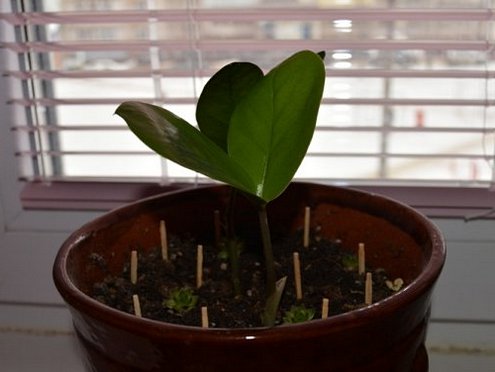
Using matches to combat midges - Wood ash is a double result, since it is also a fertilizer (although only if the flower does not require acidic soil, as ash alkalizes it). To control pests, you need to sprinkle it on the surface of the soil. Soon the midge will disappear.
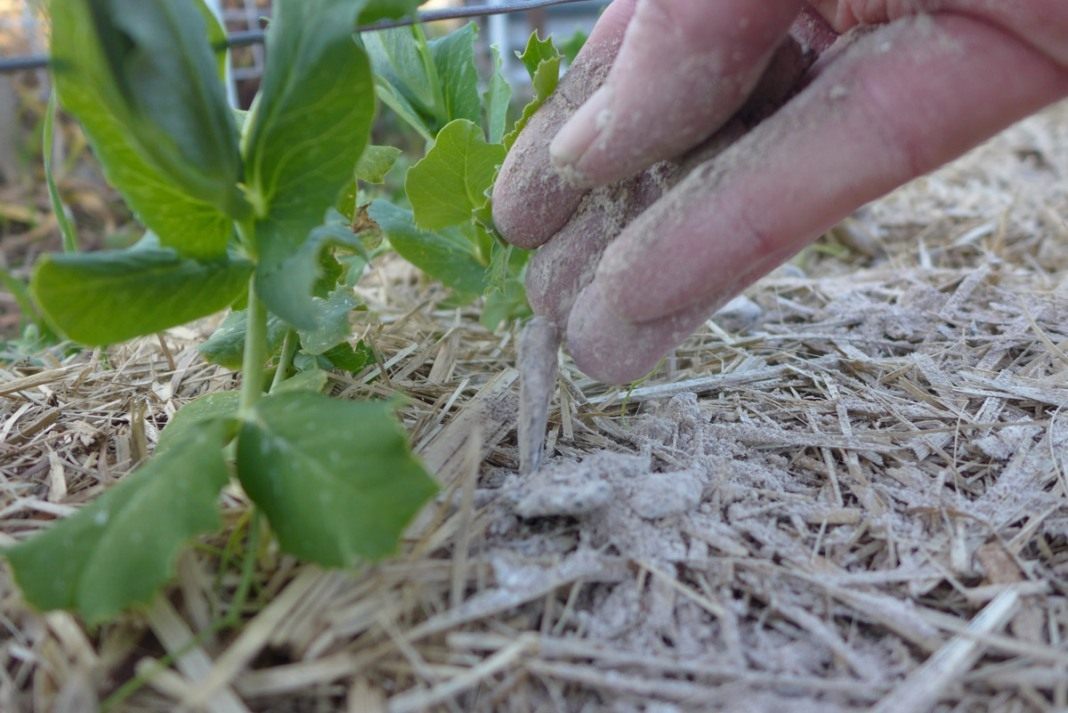
Wood ash - Tobacco: you can make an infusion, or you can just sprinkle dry powder on the surface of the soil.
- Cinnamon: here they use its property to stop putrefactive processes. Moshka will simply not have what to eat. A pleasant bonus will be the aroma in the room.
- Balm "star": midge does not like pungent odors, including essential oils of mint, eucalyptus. Balm need to anoint the edges of the pot.
- A prescription with tablets from animal parasites will also be effective in controlling ground insects. It is described above.
There is still an effective option - soil replacement. In this case, you will need to thoroughly wash the plant, taken out of the pot, and the pot itself. Wash the flower carefully so as not to damage the roots. You can rinse in one of the infusions, the recipes of which are in the article. Soil to take a new one, calcine it in the oven at 100 degrees for one hour. Then add a remedy for the restoration of microflora, for example, Biohumus, Vermiculite.
Poisoning the soil with poisonous substances is also more effective using a “toxic greenhouse”. If there is confidence that the midge does not hide in the leaves, then only a pot can be wrapped in film, and the aerial part of the flower is left uncovered.
Ready-made drugs must be chosen carefully, weighing the risks to the environment. You can choose with a low level of toxicity, for example, Actofit, Fitoverm, Agravertin, Fufanon, Inta-virus. They are applied twice at weekly intervals.
There are a number of granular products that need to be mixed in the topsoil of the flowerpot and watered. They act a little slower, but still effective. This, for example, Flies, Bazudin, Thunder-2.
For any manipulations with the preparations, use protective equipment: gloves, mask. After the end of the manipulations, you can carry out wet cleaning at the place of work.
Preventative measures
The main preventive measure is watering control. Even if the flower is a water loaf, then it is unlikely that he needs stagnation of water that causes fermentation.
Other conditions so that the midge does not start:
- Monitor the cleanliness of the soil, remove all fallen leaves and stems. There are tips to mulch the soil around the plant. But in the case of indoor flowers, this is an unnecessary manipulation. Mulch is used in outdoor conditions when it is necessary to protect plantings from sunlight, freezing, drying out of the soil. At home, there are no such climatic effects.
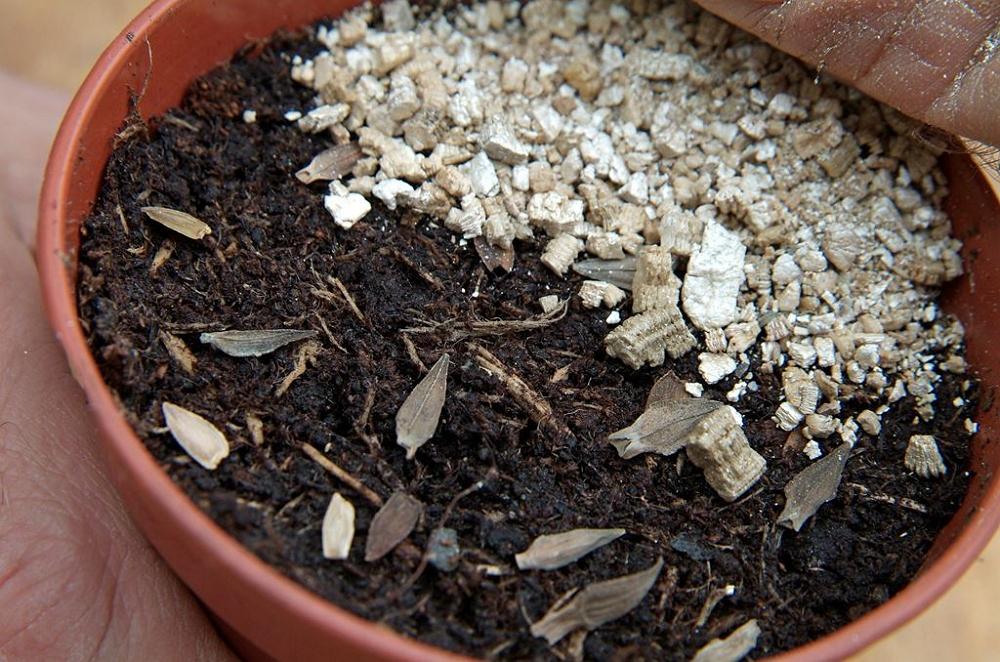
Using vermiculite as a mulch - Fertilize in the form of infusions and preparations, not organics.Sometimes it is advised to add sleeping tea leaves or coffee grounds - do not do this.
- Do disinfecting procedures immediately before the first planting of a new plant: treat the soil with steam, in the oven or hold in the cold, pour boiling water over the pot.
- Monitor the soil so that the top layer always has time to dry. Loosen.
- Good drainage. When planting, take care of this fact so that the plant receives plenty of water, and the excess goes into the pallet, without forming stagnation.
Common questions
Specialists answer additional questions about midges:
Sometimes the invasion of midges seems impossible to defeat, especially if out of ignorance infection of all colors in the house is allowed. But this "natural disaster" can be dealt with if you follow the advice of experienced gardeners.

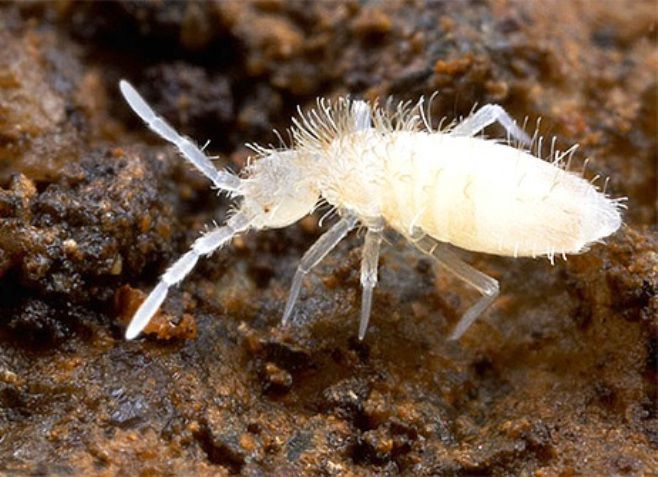
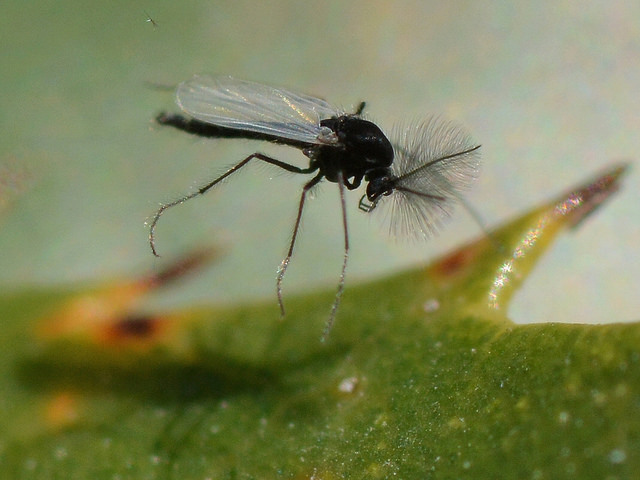
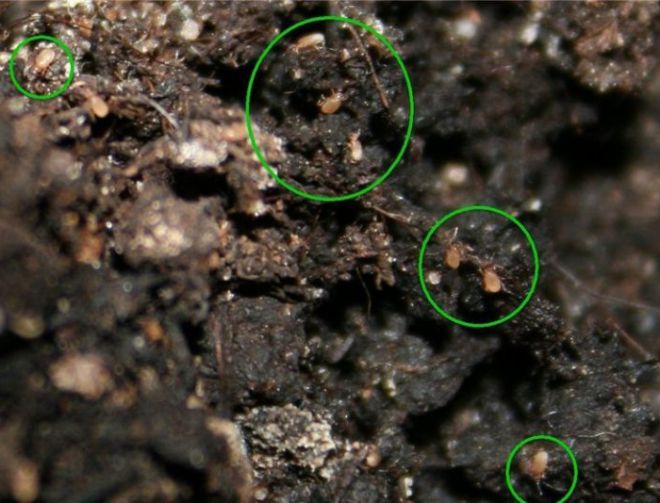
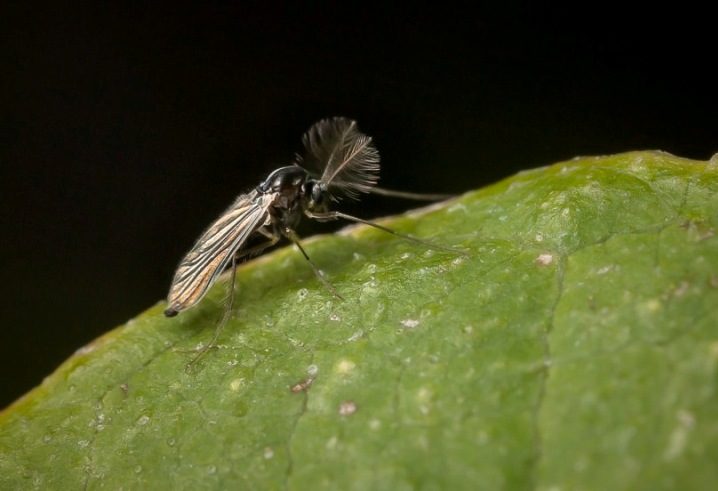
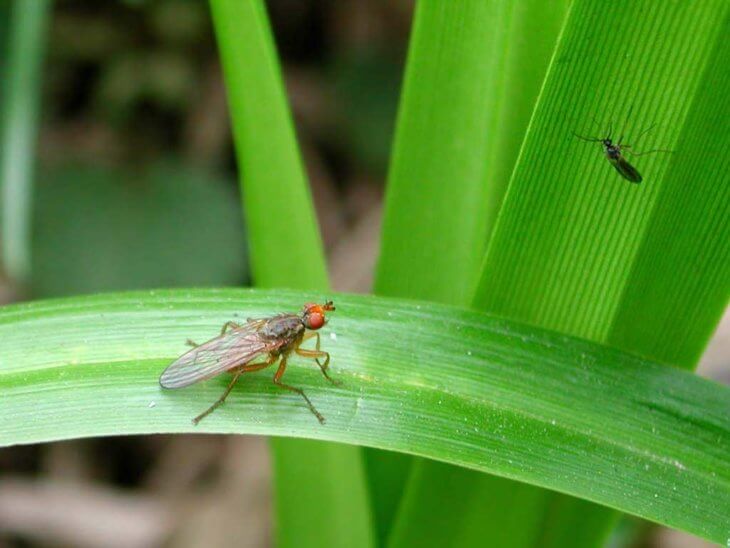
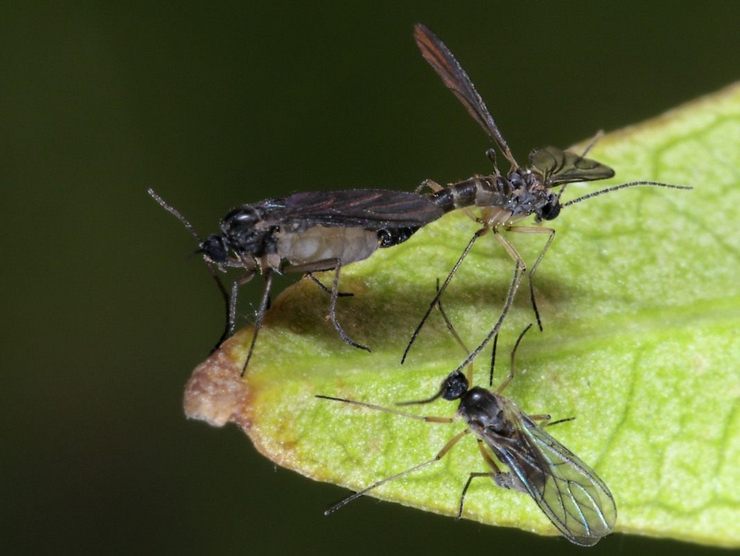
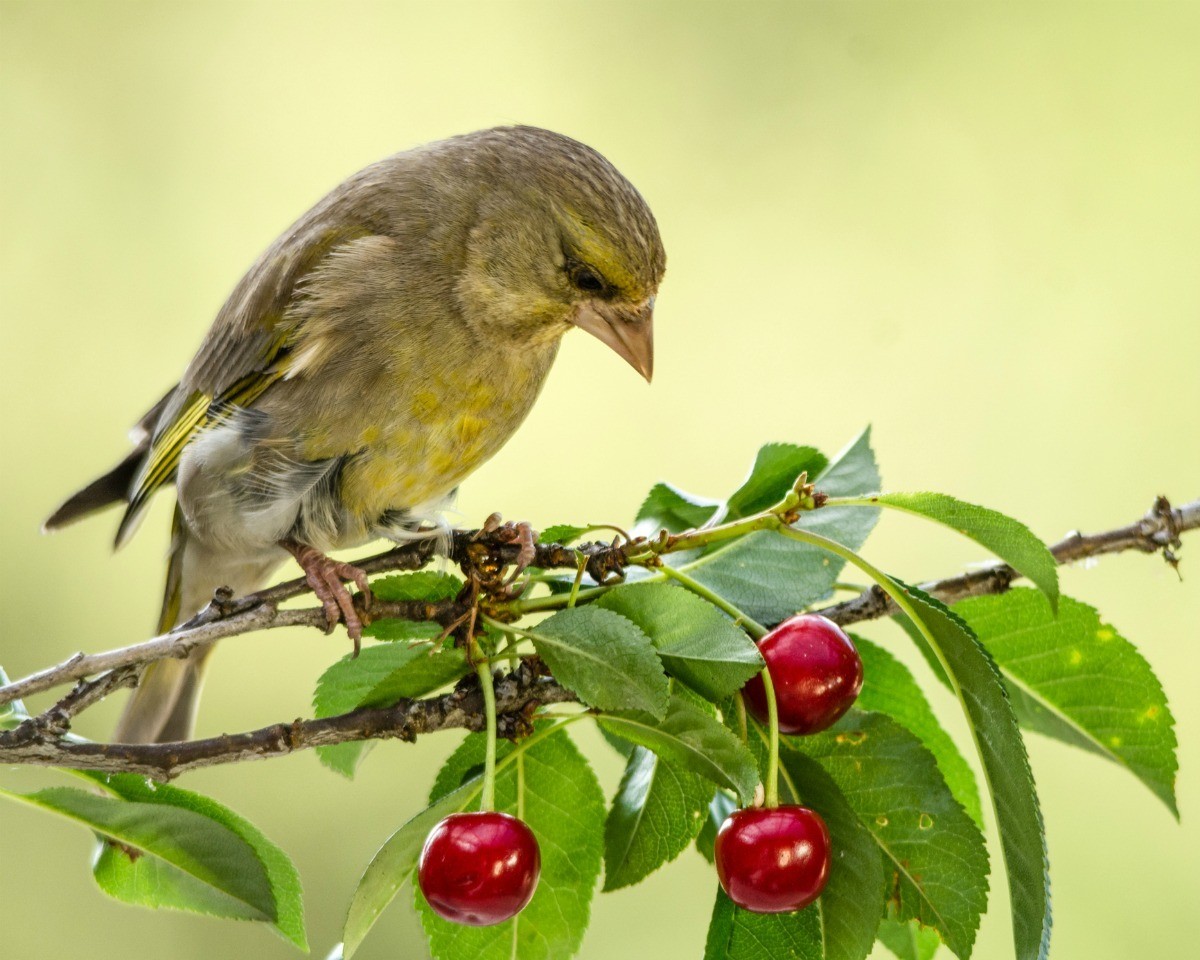
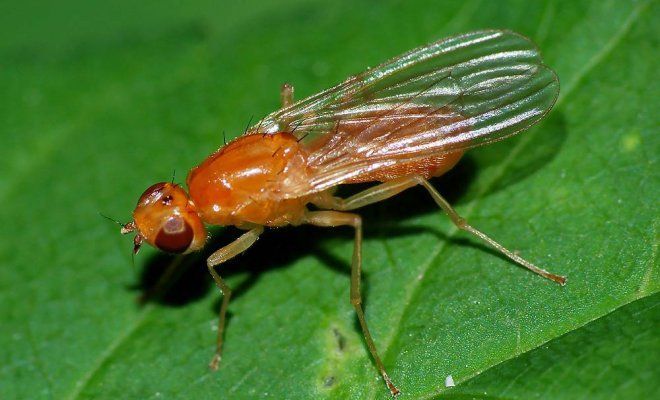
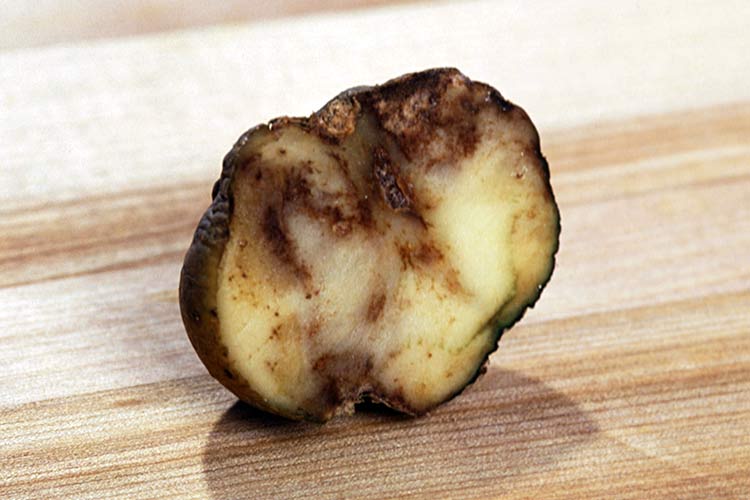
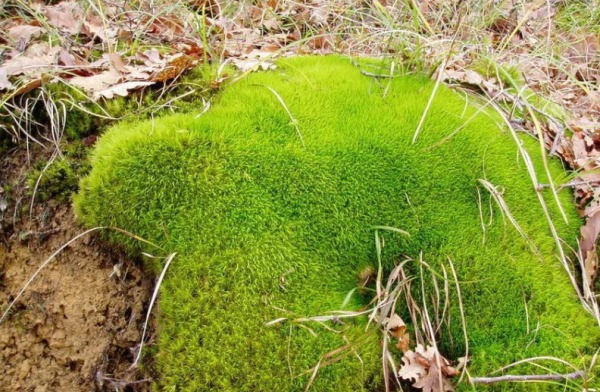 Where does moss come from in the garden and is it necessary to get rid of it?
Where does moss come from in the garden and is it necessary to get rid of it?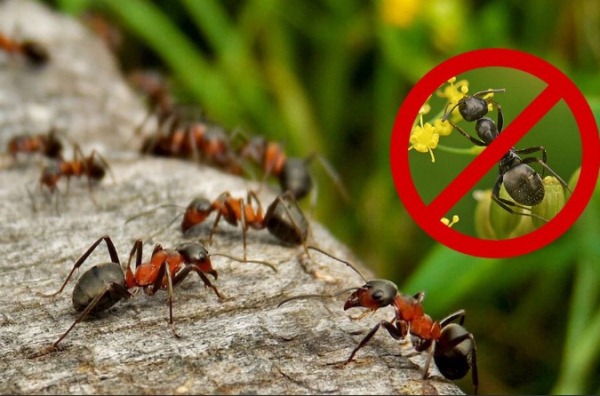 The most effective ways to deal with ants in the area
The most effective ways to deal with ants in the area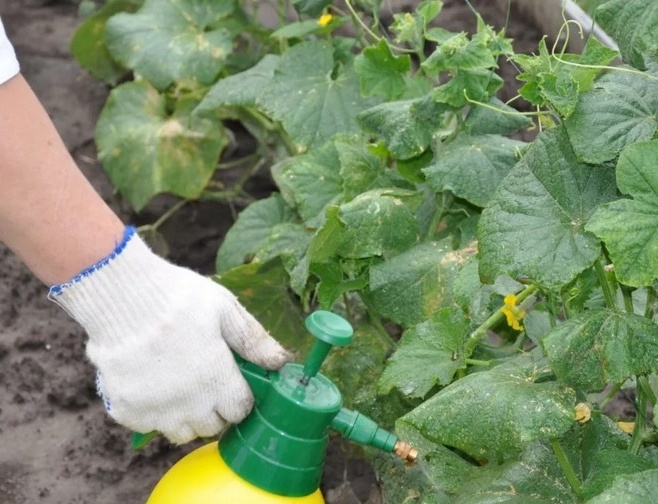 Cockchafer and Bear: An Easy Way to Save Plant Roots
Cockchafer and Bear: An Easy Way to Save Plant Roots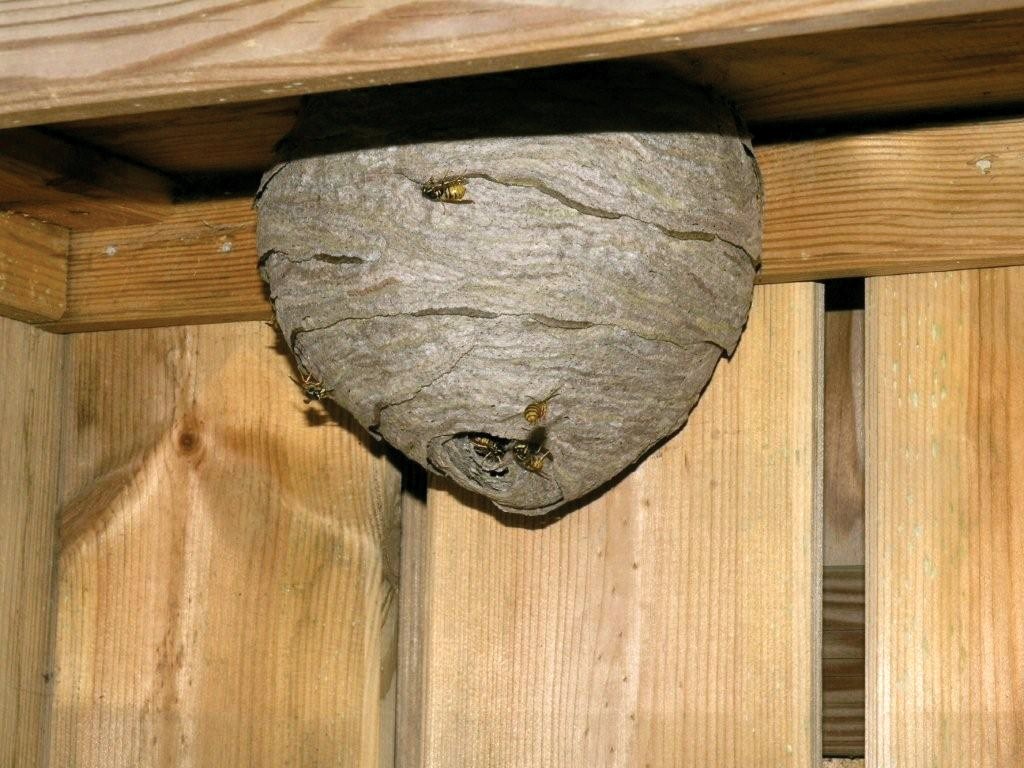 Get rid of the aspen nest quickly and safely.
Get rid of the aspen nest quickly and safely.